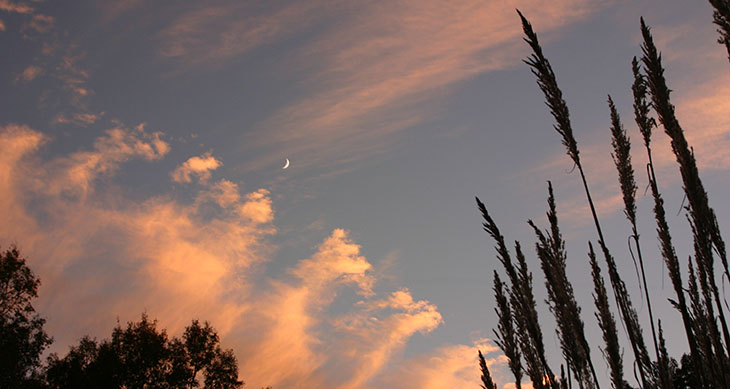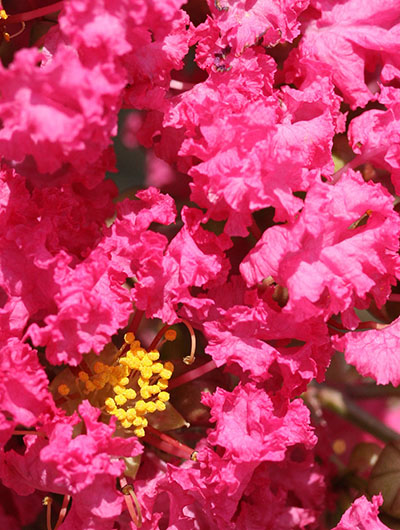
Something to remind yourself when things start to look bleak. Or maybe I’m the only one that suffers from this narrow focus…
Naaaahhh.
 Anyway, a brief break for the fartsy stuff, since I don’t do art. Some are recent, some not so much – every once in a while I just have to post a string of images without a whole lot of oral background.
Anyway, a brief break for the fartsy stuff, since I don’t do art. Some are recent, some not so much – every once in a while I just have to post a string of images without a whole lot of oral background.
When I’m out with students, I don’t shoot a lot, and I generally work light – no macro strobe rig or bracket, and no tripod. If the light is reduced, this means shooting wide open with a large aperture fairly often, so I pick subjects where the short depth-of-field can work the best. Here, two contrasting berries in the same focal plane stand out among the others, but this is a slightly misleading photograph – this was only a small cluster of berries remaining on a bush that had been harvested by birds. As I’ve often said, whatever goes to the edges of the frame goes on forever to the viewer, representing the whole scene – it’s an easy way to provoke a particular mood or idea that works better than the reality. As long as you don’t tell everyone…

I confess: this image, taken from the old yard during a cool sunset, had two electrical wires cutting across the bottom, the frustration of scenic photographers everywhere. Easy enough to edit out, though.
 I just liked the effect of the backlighting and shadows.
I just liked the effect of the backlighting and shadows.

 Sometimes it’s more how you take it than what you take. It’s easy enough to get photos of lily pads, but do they look better by taking advantage of the way the light and reflections provide contrast with a rich indigo color, and a little effort in framing? Subtle changes to position and shooting angle can change your images radically, communicating the setting while providing a little eye-catching abstraction. Or maybe not – that’s really up to you, and I’m on the edge of doing that ‘art’ thing where I overexplain what it is you’re seeing.
Sometimes it’s more how you take it than what you take. It’s easy enough to get photos of lily pads, but do they look better by taking advantage of the way the light and reflections provide contrast with a rich indigo color, and a little effort in framing? Subtle changes to position and shooting angle can change your images radically, communicating the setting while providing a little eye-catching abstraction. Or maybe not – that’s really up to you, and I’m on the edge of doing that ‘art’ thing where I overexplain what it is you’re seeing.

The tip of the leaf almost touching the other gave the dew a chance to collect into a bigger drop than normal, bridging the gap. The things you find when you crawl around on damp mornings looking for something interesting.
 I don’t recommend tackling high-contrast subjects in bright light conditions, which increase contrast even further – it’s too easy to go outside of the band the camera can capture effectively and start bleaching out the colors or making shadows too harsh. But sometimes it can work.
I don’t recommend tackling high-contrast subjects in bright light conditions, which increase contrast even further – it’s too easy to go outside of the band the camera can capture effectively and start bleaching out the colors or making shadows too harsh. But sometimes it can work.

I can’t decide which approach works the best; these were taken with a shift of a meter to so to the side to change the foreground elements, and a slightly different focal length. It doesn’t help that, put alongside one another here, they almost mirror each other.
 Not an autumn shot, but a summer one, only a few weeks ago after a heavy wind and rain storm deposited a selection of leaves into a stream. If you’re paying attention to how the light differs in these images, you can see how deep shade can make colors appear differently than in sunlight, and can hopefully use this to your advantage.
Not an autumn shot, but a summer one, only a few weeks ago after a heavy wind and rain storm deposited a selection of leaves into a stream. If you’re paying attention to how the light differs in these images, you can see how deep shade can make colors appear differently than in sunlight, and can hopefully use this to your advantage.
And in closing, a tight shot of dew (yes, again) on a dandelion blossom right before seed dispersal, short focus and a patch of direct sunlight from the rear, creating a seriously surreal image from the defocused effects.

I find it a curious anachronism, actually; one is supposed to keep the focus of attention sharp, because our eyes automatically go towards the sharpest portion of an image (as shown above,) but they also go towards contrast, and in this image, that’s the defocused highlights at lower left. I think our eyes go there first, then seek out the sharper details to try and make sense of what we’re seeing, putting it all in context. At least, that’s what I do…



















































